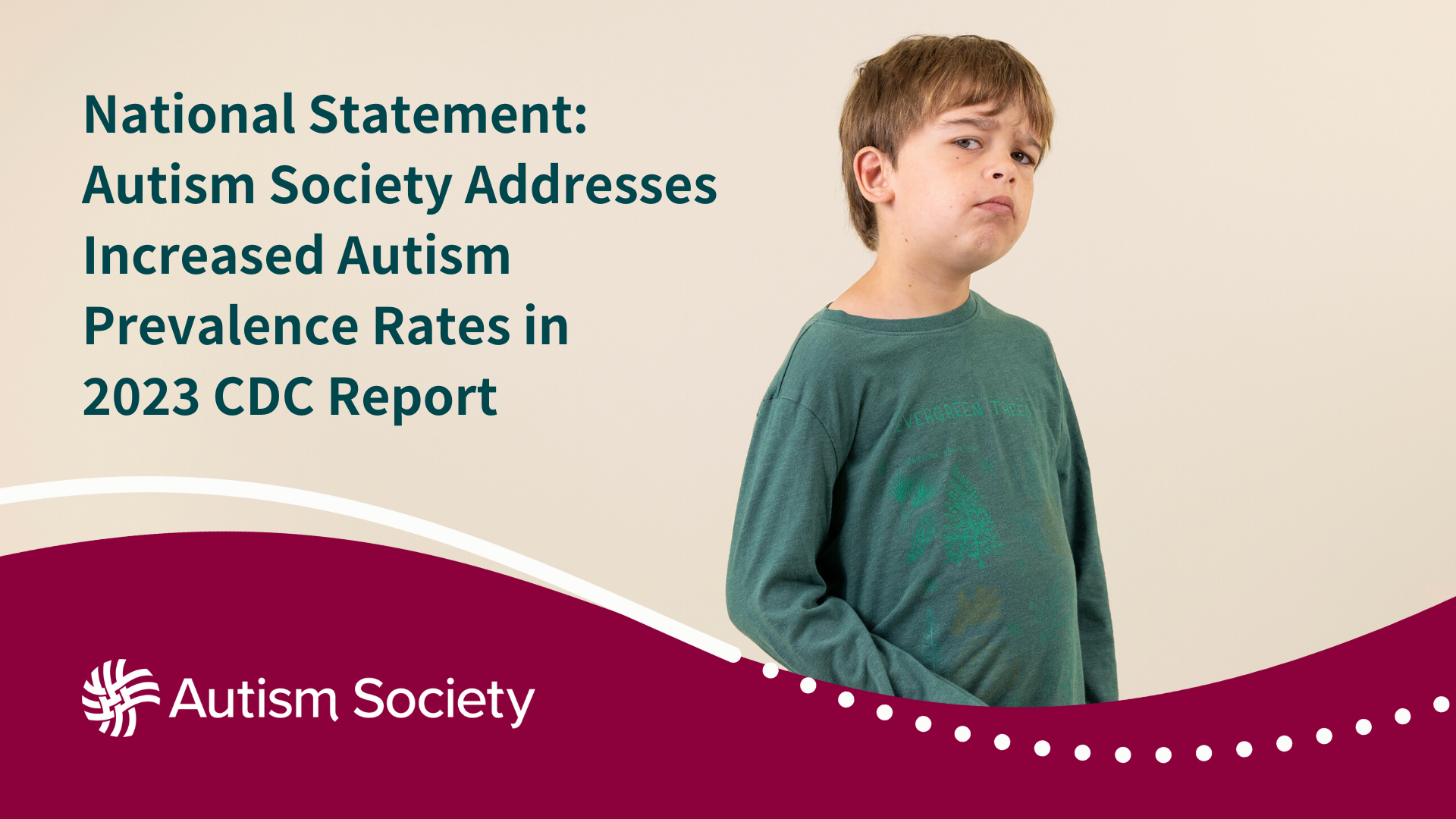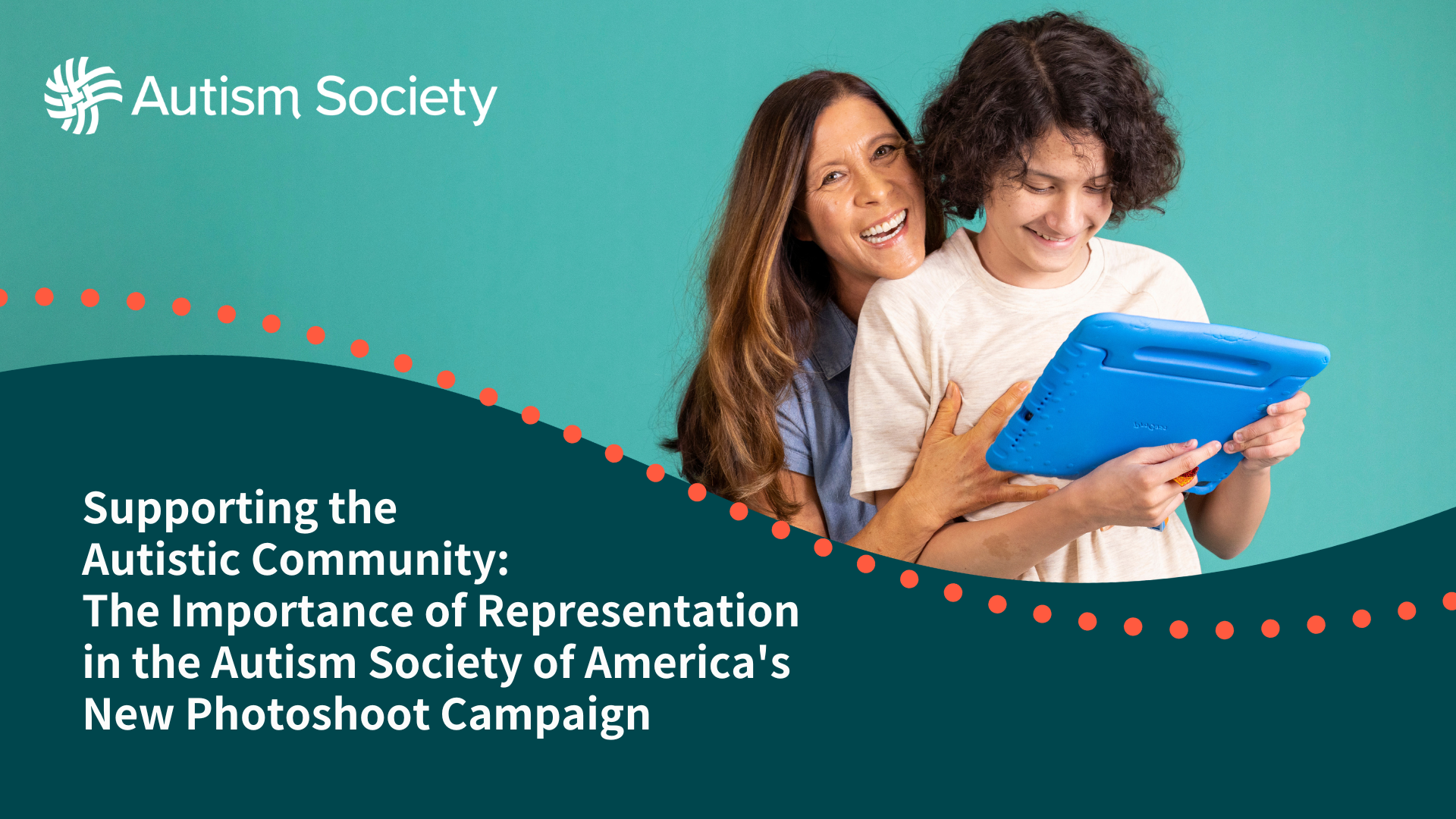
The ADDM Network Details Autism Prevalence Rate Increases to 1 in 36 Children.
Rockville, MD, March 23, 2023 – The Centers for Disease Control and Prevention (CDC) has released two new reports from the Autism and Developmental Disabilities Monitoring (ADDM) network detailing prevalence rates, characteristics, and screening and diagnostic information. As a CDC partner, the Autism Society of America routinely reviews these reports to disseminate information, educate the greater community, and advocate for critical policy changes that ensure everyone in the Autism community has access to the resources they need to live fully. Today, the CDC reports a continued increase in the prevalence rate with one in 36 children receiving an Autism diagnosis.
Increasing prevalence estimates continue to underscore the urgent need for equitable supports and services in the Autism community. The increase to 1 in 36 eight-year-olds being diagnosed from the 2021 report of 1 in 44 eight-year-olds, can be attributed to a variety of factors, including an increased rate of diagnosis itself. This means that while diagnostic screening and identification are improving in some ways, the prevalence rate is also increasing.
The early identification report demonstrates that for the first time, the percentage of 8-year-old Asian or Pacific Islander, Hispanic, and Black children identified with Autism was higher than among 8-year-old White children. This change effectively closes the racial and ethnic gap which was observed and reported in previous ADDM reports. These shifts may reflect improved screening, awareness, and access to services among historically underserved groups.
“The Autism Society and its network of affiliates have been working to close the racial disparity gap in early screening and diagnosis through education, resource development, and community programming to better support these underserved populations,” states Christopher Banks, President and CEO of the Autism Society of America. “It’s important to recognize this improvement, however, the increased prevalence rates means we urgently need increased access to quality supports and services at the federal and state level.”
While there have been improvements in early Autism identification over time, the COVID-19 pandemic has greatly disrupted progress to have an overall increase in screening efforts. The data reflects that screening of four-year-olds was initially on-track to show increased results of early detection, but was abruptly halted in March 2020 and has struggled to recover; this has resulted in long waitlists to receive timely screening and diagnosis, as well as delaying the opportunity to connect to essential early interventions and supports.
Children who receive an Autism diagnosis by age 4, are more likely to receive services that lead to improved long-term outcomes. This confirms the need to urgently increase our capability to screen and effectively diagnose children as early as possible; the Autism Society recommends that children be screened at least three times before age three (9, 18, and 24 or 30 months), so that they can be referred for services to have the best chance of success to live fully.
The Autism Society of America, like the CDC, supports early identification as one of the most important tools communities have in helping to make a difference in the lives of children with Autism. The CDC’s Learn the Signs. Act Early. program promotes early identification by providing parents, childcare professionals, and healthcare providers free resources, in English and Spanish, for monitoring children’s development. Additionally, the Autism Society has updated resources as part of our 2023 Autism Acceptance Month campaign that provides digestible facts and statistics about Autism.
Established in 2000, the ADDM Network is the only network to track the number and characteristics of Autistic children and other developmental disabilities in multiple communities throughout the United States. This data provides important information from which researchers, policymakers, and service providers are able to make important decisions about how to best serve these individuals and their families. However, it is important to note that these estimates are based on 8-year-old children living in 11 community sites, and do not reflect the entire population of children in the United States. The Autism Society has continuously urged the CDC to increase its population data by expanding the number of sites and diversity of populations. Learn more about the ADDM sites here.
See the full prevalence and early identification reports published in the Morbidity and Mortality Weekly Report on the CDC website.
Visit our website to learn more about Autism, and screening and diagnosis. Connect to professional Information and Referral Specialists by contacting our National Helpline.
Share:






